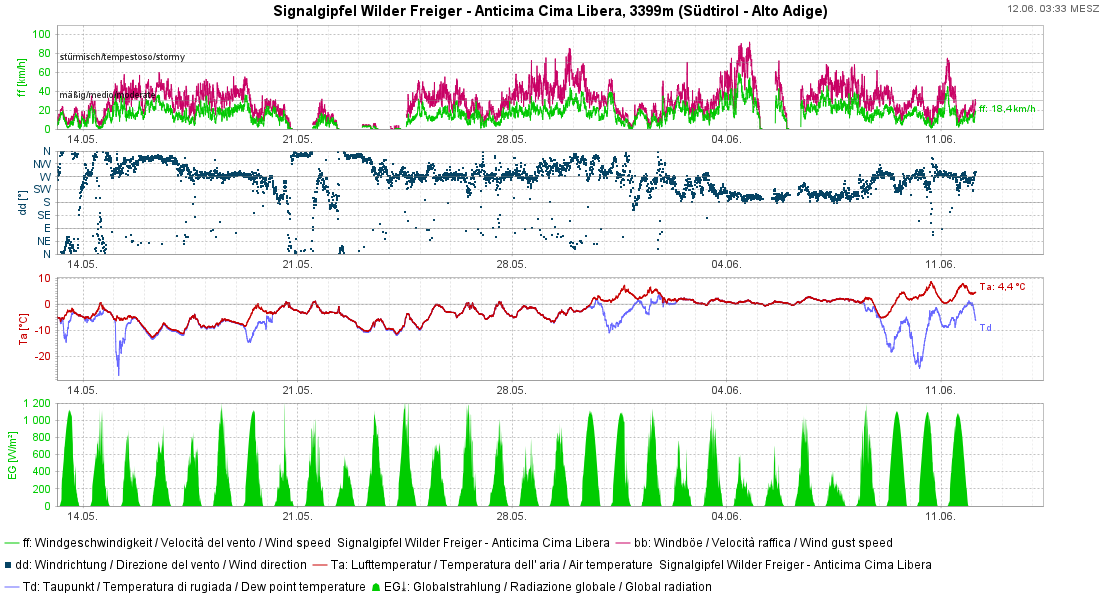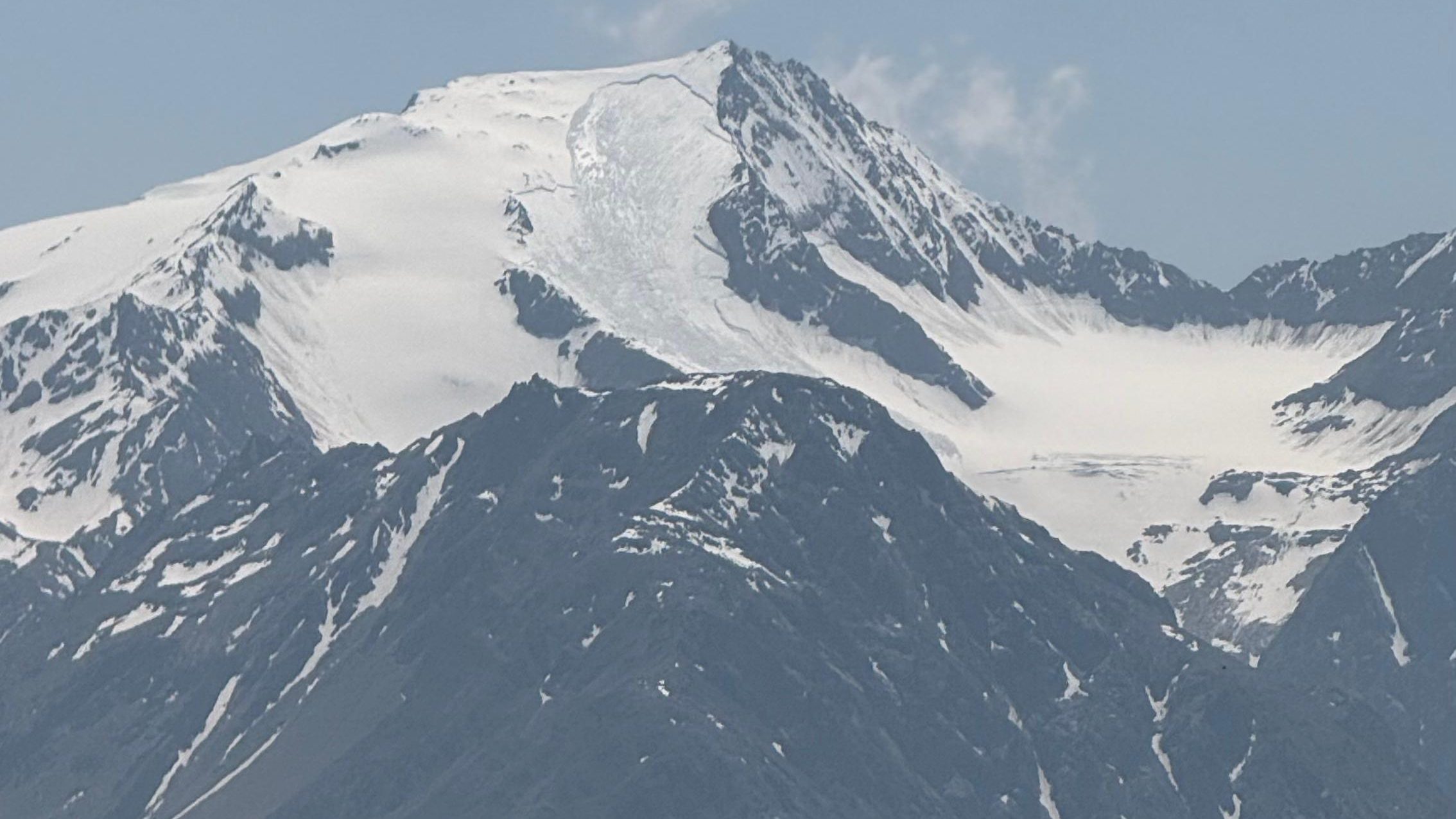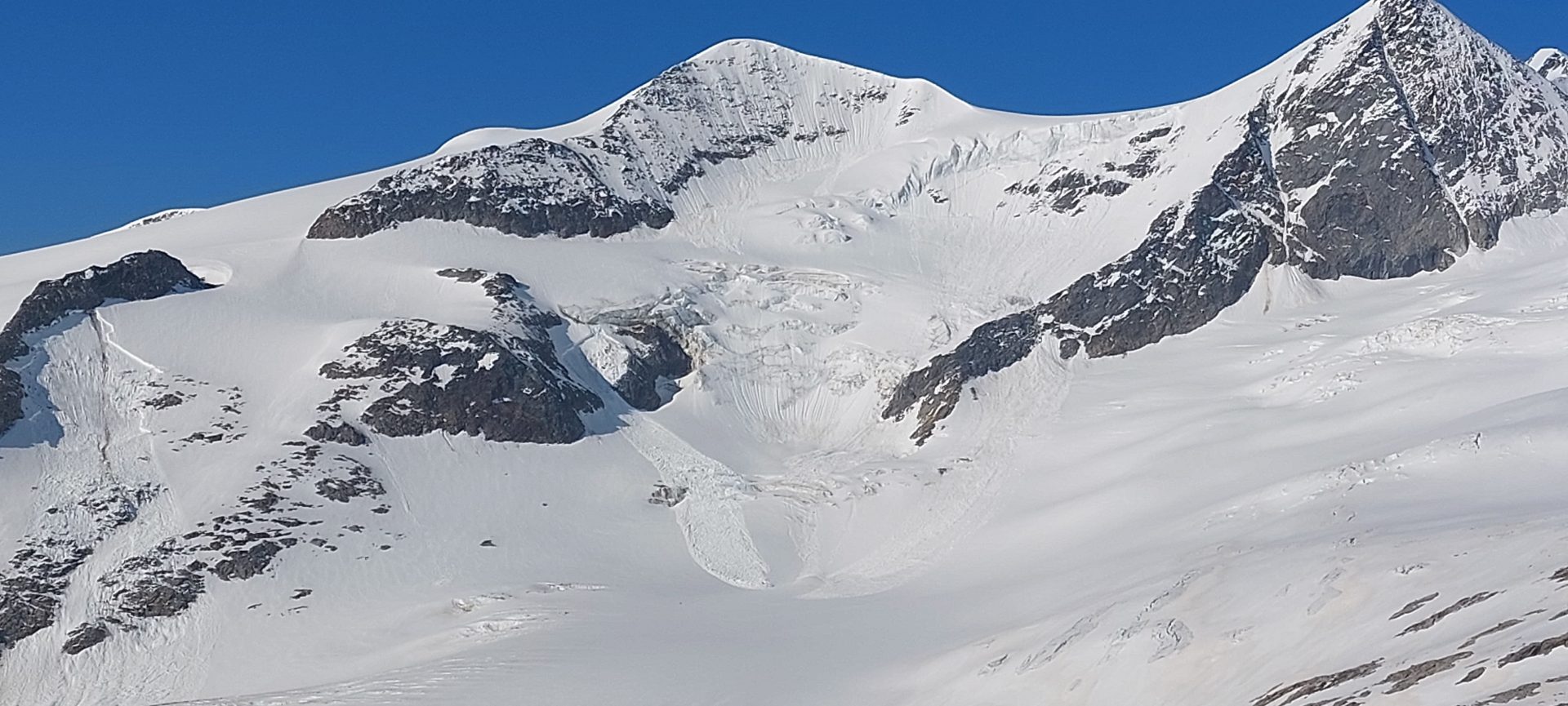With the year’s first heat wave, the last deep-lying weak layers on north-facing high-alpine slopes are being thoroughly moistened for the first time. This significant wetness is leading to naturally triggered, wet-snow avalanche activity. Whoever is en route in the high Alps needs to terminate their tour early in the day.
Naturally triggered wet slab avalanches, esp. at high-alpine altitudes in the Stubai Alps
Following a generally cool and wet month of May, air temperatures in the first week of June easily rose above 0° C in high alpine regions, and in more recent days beginning on Sunday, 9 June, have risen significantly further. Due to relatively low air temperatures and clear skies during the nocturnal hours, a melt-freeze crust capable of bearing loads formed especially on north-facing slopes during the nights that followed, rapidly melting later in the morning.

Due to the significant rise in air temperatures, the process of north-facing slopes becoming thoroughly wet at high-alpine altitudes was launched. This led also to ground-level, expansively metamorphosed weak layers from early winter becoming wet. On Monday, 9 June, a large sized avalanche was reported on the Längentaler Glacier (Sellrain, Alpeiner Mountains). In addition there were reports from the Venediger Massif. On Thursday, 12 June, at about 14:30, a very large, wet slab was reported to have release just below the summit of Wilder Freiger (Central Stubai Alps) on a north-facing slope.


These observations make clear that currently, esp. on north-facing high-alpine slopes, foehn conditions can’t be depended on. Activity of wet-snow avalanches needs to be taken into consideration in planning tours. In other words: early ascent…and early descent.